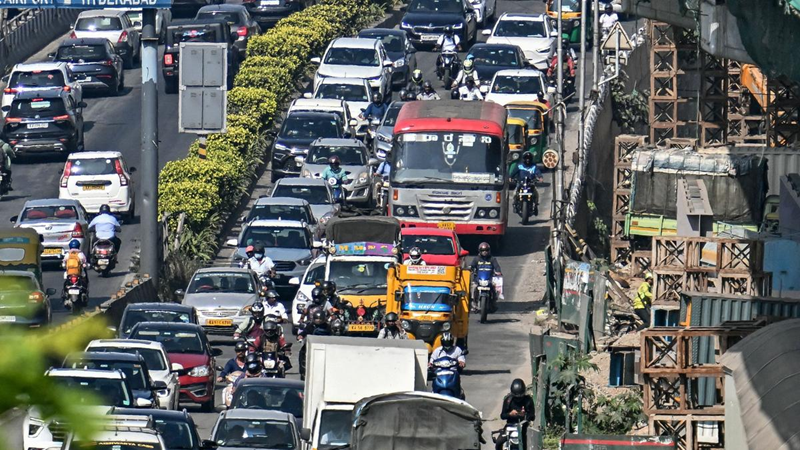
India Set to See Rising Food Grain Prices
By Siraj Hussain & Shweta Saini
Even the critics of India’s public distribution system (PDS) acknowledge that it worked well during the Covid-19 pandemic. Additional allocations of free food grains at 5 kg per person per month, under Pradhan Mantri Garib Kalyan Anna Yojana (PMGKAY), helped prevent mass hunger over the last two years. Some states also provided gram, salt and edible oils to ration card holders.
What’s more, in the Uttar Pradesh Assembly elections held in February and March this year, the voters seemed to have taken this ‘generosity’ into account.
These allocations were possible due to the excess procurement of rice and wheat over the last four years. Rice procurement increased from 38.18 million tons in 2017-18 to 60 million tons in the Kharif Marketing Season (KMS) 2020-21. This year, too, procurement is likely to reach the same level.
Similarly, the procurement of wheat increased from 30.8 million tons in 2017-18 to 43.3 million tons in 2021-22. This year though, due to export pressures and a lower crop yield due to high temperatures in March, wheat procurement may only reach about 35 million tons.
The government made good use of excess stocks by distributing them through the PDS in the pandemic years. Moreover, it seems as though leakages under the PDS have also come down.
While no official study on leakages has been conducted since the implementation of National Food Security Act, 2013, it appears that use of biometrics and point of sale (PoS) machines at ration shops has helped in checking diversion and leakages. The portability of ration cards, which permit a cardholder to draw their ration from anywhere in India, also seems to have helped.
Wheat and rice production over the last five years has been so comfortable due to four mostly normal monsoons. The market prices of most agricultural commodities were depressed, both in India and abroad.
The situation changed in 2021-22 when global prices started rising and Indian wheat, rice and sugar became globally competitive. As a result, until February 2022, India had exported 6.7 million tons of wheat, 15.6 million tons of non-basmati rice and 3.5 million tons of basmati rice. Due to record-high global prices, wheat exports from India may touch 10-12 million tons in 2022- 23.
In the case of wheat, however, the domestic situation may be changing for the worse. As mentioned above, due to high temperatures in March, 2022, there seems to be a shrivelling of wheat in the major producing states of Punjab, Haryana and Uttar Pradesh.
While the government estimates production of 111 million tons, the trade estimates a loss of 10-15% of production. As a result, the procurement, as of April 19, is about 100 lakh tons against last year’s 137 lakh tons on the same date.
While Punjab is only about one lakh ton short of last year’s 49.5 lakh tons, Uttar Pradesh has procured only about 12% of last year’s 3.7 lakh ton of wheat, Madhya Pradesh has procured about 60% of last year’s 32.7 lakh ton and Haryana has procured about 66.7% of last year’s 48 lakh tons.
If there is high food inflation due to the Russian invasion of Ukraine and the high global prices of petroleum, edible oils and other commodities persist, wheat and rice may see inflation as well. In that case, the government should have enough stock in its central pool to release into the open market under the Open Market Sale Scheme (OMSS).
Our projections show that in the best case scenario of wheat procurement of 35 million tons, the government may have to release 10 million tons under the OMSS.
After the announcement of the Assembly elections results, the Uttar Pradesh government had announced the continuation of free food grain distribution scheme for another three months.
The next day, the Union government announced allocations under the PMGKAY for six months, until September. Due to this additional allocation, the central pool wheat stocks on April 1, 2023 may be below or just about at par with the buffer norms.
Therefore, continuation of the PMGKAY beyond September, 2022 may not be possible. The wholesale price inflation for wheat in March was 14%. The retail prices will, therefore, reflect the same once the peak arrival season is over, in June 2022.
India’s surpluses of agriculture are marginal and adverse weather events and global prices have an impact on domestic availability.
Finally, global production of rice may also be affected this year due to the rising prices of fertilizers caused by the disruption of supplies of phosphoric and potassic nutrients from Russia and Ukraine.
In the last year, global rice prices have stayed stable. That is set to change in 2022.
(Siraj Hussain is a former Union agriculture secretary. Shweta
 English daily published in Bengaluru & Doha
English daily published in Bengaluru & Doha






